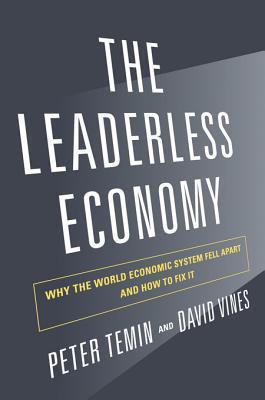
A new way to understand financial crises—and a blueprint for tomorrow's recovery The Leaderless Economy reveals why international financial cooperation is the only solution to today's global economic crisis. In this timely and important book, Peter Temin and David Vines argue that our current predicament is a catastrophe rivaled only by the Great Depression. Taking an in-depth look at the history of both, they explain what went wrong and why, and demonstrate why international leadership is needed to restore prosperity and prevent future crises. Temin and Vines argue that the financial collapse of the 1930s was an "end-of-regime crisis" in which the economic leader of the nineteenth century, Great Britain, found itself unable to stem international panic as countries abandoned the gold standard. They trace how John Maynard Keynes struggled for years to identify the causes of the Great Depression, and draw valuable lessons from his intellectual journey. Today we are in the midst of a similar crisis, one in which the regime that led the world economy in the twentieth century—that of the United States—is ending. Temin and Vines show how America emerged from World War II as an economic and military powerhouse, but how deregulation and a lax attitude toward international monetary flows left the nation incapable of reining in an overleveraged financial sector and powerless to contain the 2008 financial panic. Fixed exchange rates in Europe and Asia have exacerbated the problem. The Leaderless Economy provides a blueprint for how renewed international leadership can bring today's industrial nations back into financial balance—domestically and between each other.
Author

Peter Temin (born 17 December 1937) is an economist and economic historian, currently Gray Professor Emeritus of Economics, MIT[3] and former head of the Economics Department. Temin graduated from Swarthmore College in 1959 before earning his Ph.D. at MIT in 1964. Beginning in the 1960s and early 1970s he published on American economic history in the 19th century, including The Jacksonian Economy (1969) and Causal Factors in American Economic Growth in the Nineteenth Century (1975), as well as Reckoning with Slavery (1976), which was an examination of the slave economy and its effects. His papers of the 1960s would reflect intense empirical study as part of his working method, including composition of iron and steel products, which would later be part of his analysis of industrial development. He continued his study of 19th century industrialization with Engines of Enterprise.